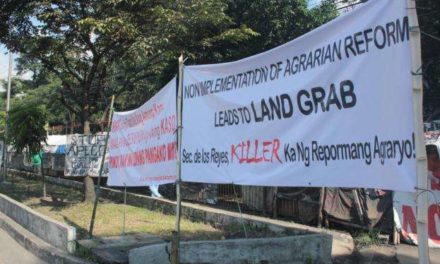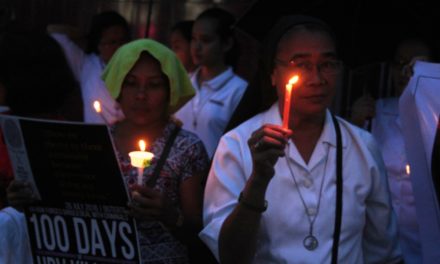June 10, 2013 marks the 25th year anniversary of the passage of the Comprehensive Agrarian Reform Program (CARP) law, making it the longest running program being implemented under our democratic political system, post-EDSA 1986. It has been widely seen as the litmus test of past and present administrations’ commitment to social justice, as mandated by the 1987 Philippine Constitution. CARPER or Republic Act 9700, signed 7 August 2009, gave the original Republic Act 6657 or CARP five more years to be completed. Before this, in 1998, CARP’s land acquisition and distribution component had been given its first 10-year extension and an additional funding of PhP 50 billion through Republic Act 8532.
As the newly published report “The State of Agrarian Reform under President Benigno Aquino III” prepared by Focus on the Global South together with the Save Agrarian Reform Alliance (SARA) says, this number “translates to a whole generation of Filipinos, including children of farmers, born at the time of the law’s passage, who have grown up through the years of tentative and unfinished implementation, and now reaching adulthood amid current intensified clamor for government to complete its task.”
More than its age, other numbers speak of what CARP/ER has now become. The report cites these data: “Based on government data, poverty is highest in the top 15 provinces where there have been large backlogs in land distribution. Strong political will by DAR is therefore necessary. In 2011, these top 15 provinces accounted for more than one-third the total LAD balance. This information is significant because these provinces also figured prominently in the list of provinces where the poorest families have been found. Negros Occidental, Camarines Sur, Leyte, Iloilo and Lanao del Sur have been among the top 10 provinces with women in poor households, according to the 2009 National Household Targeting Survey for Poverty Reduction of the Department of Social Welfare and Development.”
Amidst growing restlessness of farmers and agrarian reform advocates, as seen in their protest actions at the offices of the Department of Agrarian Reform (DAR) last year, President Noynoy Aquino reaffirmed his commitment to completing the task began by his late mother during his 2012 State of the Nation Address. “Tatapusin ang pamamahagi ng lupa sa ilalim ng CARPER sa aking panunungkulan,” was P-Noy’s pronouncement. Almost a year after that pledge before the public, uncertainty remains as to whether the government is capable of completing the land and distribution component of the program, which expires in June 2014. This uncertainty is not helped by the changing targets of DAR. The Focus/SARA report cites data from DAR stating “that at the end of 2011, the official land acquisition and distribution balance was 961,974 hectares belonging to 107,639 landholdings, (but) as of January 1, 2013, according to DAR website, the official land acquisition and distribution balance is now only 879,526 hectares. This means that the Department needs to distribute 439,763 hectares per year starting January 2013 to finish LAD by December 2014. Using these new figures, DAR estimated that the NET LAD Balance (or actual distributable lands) now amounts merely to 704,526 hectares. Of the Net LAD balance, 182,121 hectares are tagged as problematic (with pending cases, technical problems, etc.). This leaves us only 522,405 hectares (from previous figure of close to one million) that DAR will work on for redistribution.”
“The government is now looking at a June 2016 deadline (end of Aquino’s term) instead of June 2014 even with this further reduced target. It is important to point out that DAR changes (decreases) targets without accounting for the rationale for such changes. If one looks at what have been distributed in terms of hectares since 2011, the figures will not tally with the newtarget,” says the report, published June 2013.
It is understandable therefore if Filipino farmers don’t share the enthusiasm of government and its economists over the continued growth of the Philippine economy. This economic growth bandied by government will amount to nothing if agrarian reform, which the 1987 Constitution underscored as an equity and social justice mechanism, does not deliver on its obligations and commitment.#
Download our newest publication: The State of Agrarian Reform Under President Benigno Aquino III’s Government
Contact Persons:
Joann Fernandez, +639153771068
Mary Ann Manahan, +639062983206









